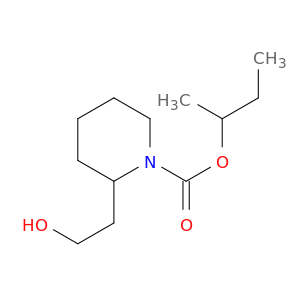
Icaridin
| Title | Journal |
|---|---|
| Altered behavioral responses of Sindbis virus-infected Aedes aegypti (Diptera: Culicidae) to DEET and non-DEET based insect repellents. | Acta tropica 20120601 |
| In vitro comparison of four treatments which discourage infestation by head lice. | Parasitology research 20120501 |
| Defining the concept of 'tick repellency' in veterinary medicine. | Parasitology 20120401 |
| Chemical composition, larvicidal evaluation, and adult repellency of endemic Greek Thymus essential oils against the mosquito vector of West Nile virus. | Parasitology research 20110801 |
| Generic insect repellent detector from the fruit fly Drosophila melanogaster. | PloS one 20110101 |
| Percutaneous permeation comparison of repellents picaridin and DEET in concurrent use with sunscreen oxybenzone from commercially available preparations. | Die Pharmazie 20101101 |
| Formulations of deet, picaridin, and IR3535 applied to skin repel nymphs of the lone star tick (Acari: Ixodidae) for 12 hours. | Journal of medical entomology 20100701 |
| Consumer exposure to biocides--identification of relevant sources and evaluation of possible health effects. | Environmental health : a global access science source 20100101 |
| In vitro permeation characterization of repellent picaridin and sunscreen oxybenzone. | Pharmaceutical development and technology 20090101 |
| Synergy between repellents and organophosphates on bed nets: efficacy and behavioural response of natural free-flying An. gambiae mosquitoes. | PloS one 20090101 |
| Mixture for controlling insecticide-resistant malaria vectors. | Emerging infectious diseases 20081101 |
| Twelve-hour duration testing of cream formulations of three repellents against Amblyomma americanum. | Medical and veterinary entomology 20080601 |
| Insect repellents: historical perspectives and new developments. | Journal of the American Academy of Dermatology 20080501 |
| Prevention of infectious tick-borne diseases in humans: Comparative studies of the repellency of different dodecanoic acid-formulations against Ixodes ricinus ticks (Acari: Ixodidae). | Parasites & vectors 20080101 |
| Chemical defense against blood-feeding arthropods by disruption of biting behavior. | U.S. Army Medical Department journal 20080101 |
| Cream formulations protecting against cercarial dermatitis by Trichobilharzia. | Parasitology research 20070601 |
| Synergy between repellents and non-pyrethroid insecticides strongly extends the efficacy of treated nets against Anopheles gambiae. | Malaria journal 20070101 |
| Three dimensional structure-activity relationships (3D-QSAR) for insect repellency of diastereoisomeric compounds: a hierarchical molecular overlay approach. | SAR and QSAR in environmental research 20070101 |
| The sensilla of Aedes and Anopheles mosquitoes and their importance in repellency. | Parasitology research 20060901 |
| Mosquito repellents and superwarfarin rodenticides--are they really toxic in children? | Current opinion in pediatrics 20060401 |
| Chirality index, molecular overlay and biological activity of diastereoisomeric mosquito repellents. | Pest management science 20051201 |
| Field evaluation of commercial repellent formulations against mosquitoes (Diptera: Culicidae) in Northern Territory, Australia. | Journal of the American Mosquito Control Association 20051201 |
| Allergic contact dermatitis due to an insect repellent: double sensitization to picaridin and methyl glucose dioleate. | Acta dermato-venereologica 20050101 |
| Analysis and mass spectrometric characterization of the insect repellent Bayrepel and its main metabolite Bayrepel-acid. | Journal of chromatography. A 20040813 |
| Field evaluation of repellent formulations containing deet and picaridin against mosquitoes in Northern Territory, Australia. | Journal of medical entomology 20040501 |
| Evaluation of the sensitivity of Aedes aegypti and Anopheles gambiae complex mosquitoes to two insect repellents: DEET and KBR 3023. | Tropical medicine & international health : TM & IH 20040301 |
| Picaridin: a new insect repellent. | Journal of drugs in dermatology : JDD 20040101 |
| Analysis and fate of insect repellents. | Water science and technology : a journal of the International Association on Water Pollution Research 20040101 |
| Synthesis and repellent efficacy of a new chiral piperidine analog: comparison with Deet and Bayrepel activity in human-volunteer laboratory assays against Aedes aegypti and Anopheles stephensi. | Journal of medical entomology 20030501 |
| Repellent efficacy of DEET and KBR 3023 against Amblyomma hebraeum (Acari: Ixodidae). | Journal of medical entomology 20030301 |
| Repellency of IR3535, KBR3023, para-menthane-3,8-diol, and deet to black salt marsh mosquitoes (Diptera: Culicidae) in the Everglades National Park. | Journal of medical entomology 20021101 |
| [Protection against biting mosquitoes]. | Therapeutische Umschau. Revue therapeutique 20010601 |